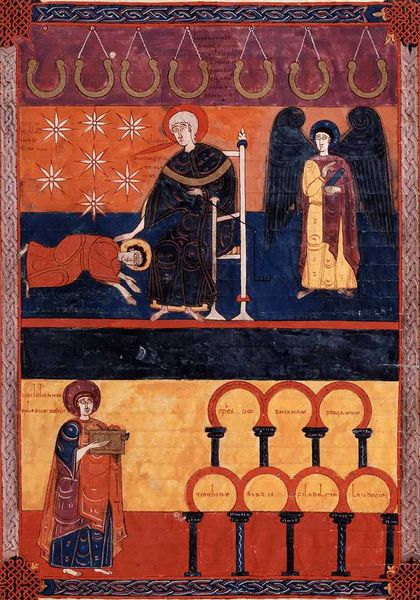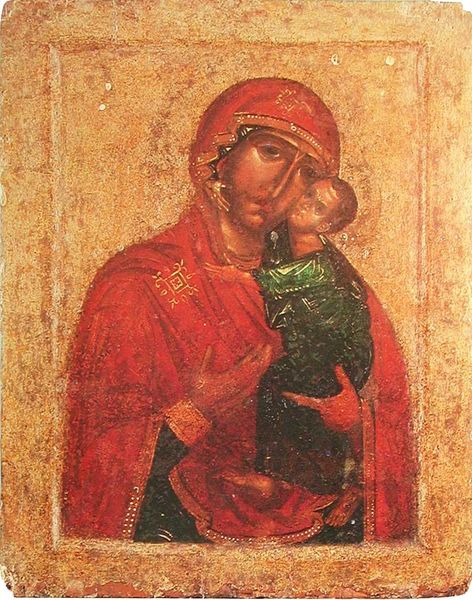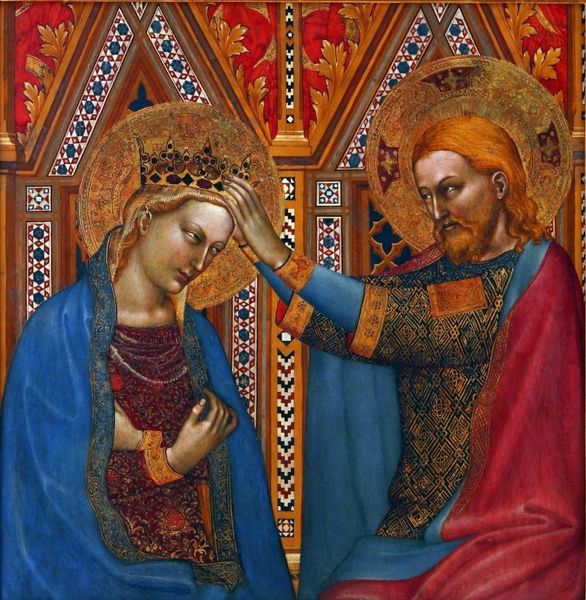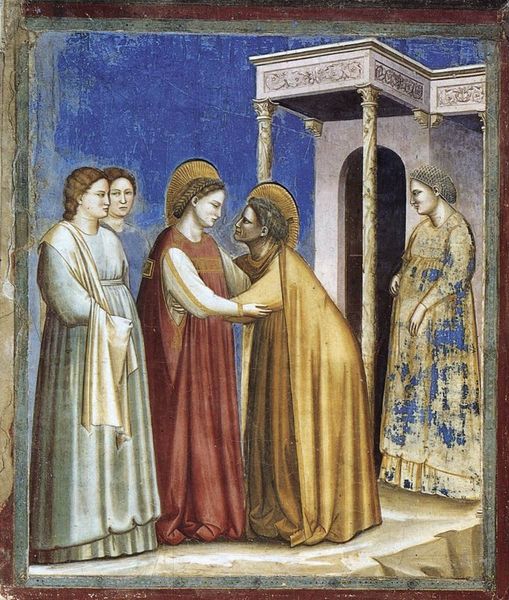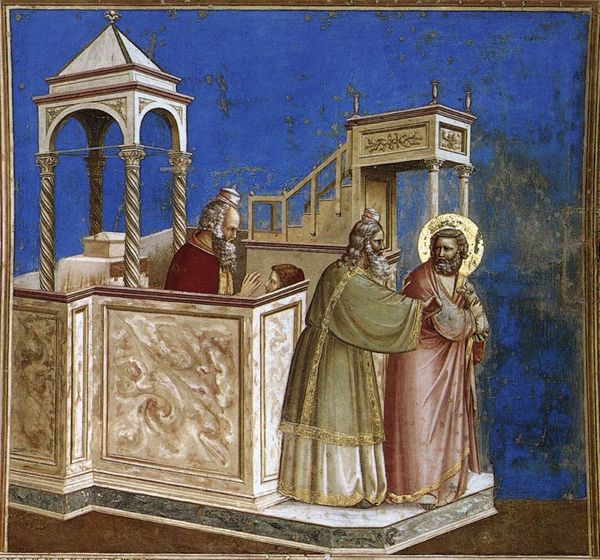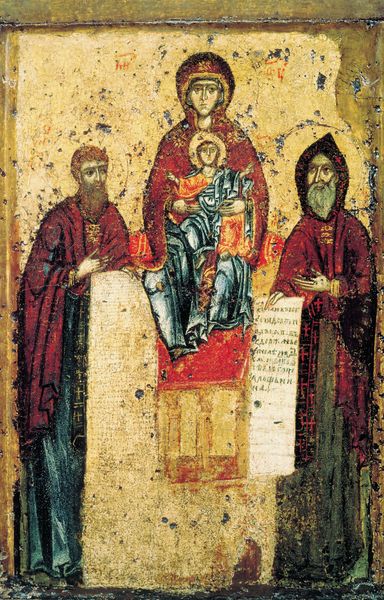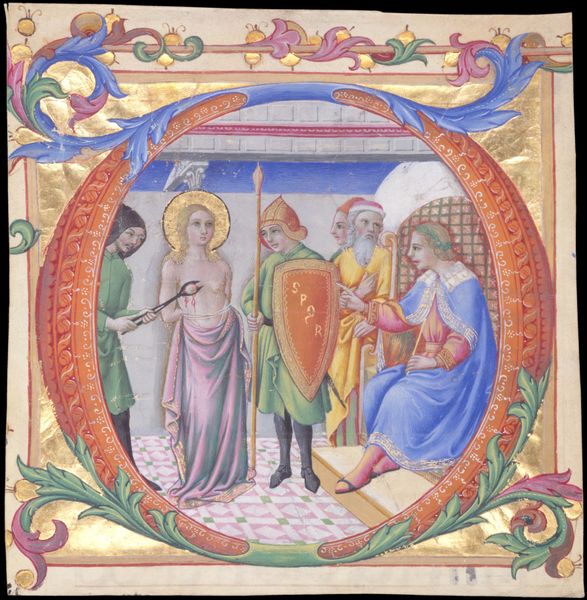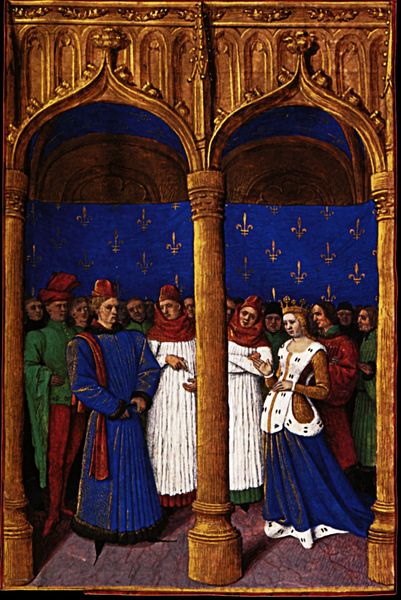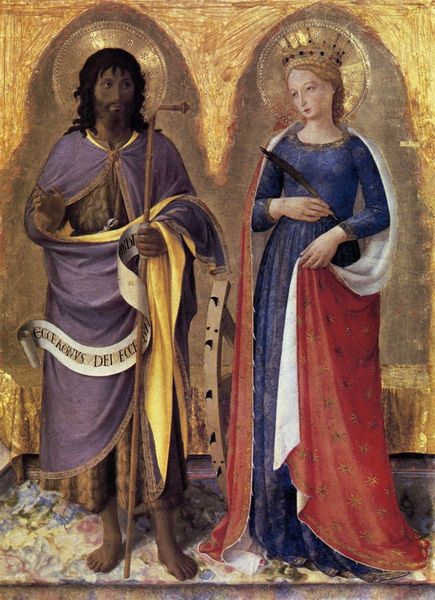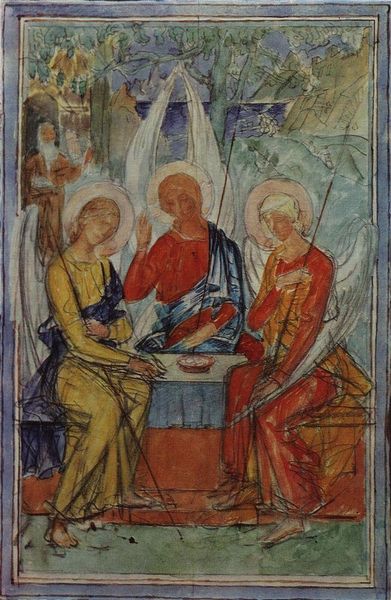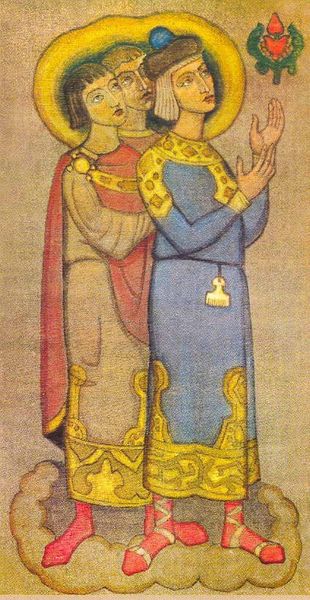
Abgar of Edessa Receiving the Mandylion from Thaddeus 944
0:00
0:00
orthodoxicons
Saint Catherine's Monastery, Mount Sinai, Egypt
panel, tempera
#
portrait
#
byzantine-art
#
panel
#
tempera
#
figuration
#
history-painting
Copyright: Orthodox Icons,Fair Use
Curator: Looking at "Abgar of Edessa Receiving the Mandylion from Thaddeus," a Byzantine-era panel residing at Saint Catherine's Monastery, I am struck by the material choices – the use of tempera creates a matte surface that almost denies its own objecthood. What's your initial take? Editor: Immediately, I’m drawn to the weight of history and power embedded in this image. It speaks volumes about cultural exchange, religious devotion, and imperial influence through both figuration and historical context. The image, ostensibly a depiction of miraculous healing and conversion, is really about legitimizing political power and solidifying social control in the service of Empire. Curator: Absolutely. Consider that this piece from 944 isn't merely narrative; it’s a physical object of devotion produced within a specific workshop context. The careful layering of tempera, perhaps incorporating costly pigments derived from afar, indicates specialized artisanal labor—linking it directly to modes of production within a Byzantine economy. Editor: And to expand on that economic dimension, reflect on how the act of presenting the Mandylion becomes a transaction—not just of faith, but of influence and authority. The panel depicts Thaddeus bestowing not only a religious icon, but also validation upon King Abgar. The painting style reinforces a visual language aimed to convince viewers to give their tacit, even material, support to the political and religious ideology it reflects. Curator: But can’t we appreciate the icon itself? The materiality affects the spiritual experience, where each application of pigment to the prepared panel contributes to a potent devotional image. Editor: We must also consider whose spirituality it privileges, though. What about the labor required to create this kind of visual propaganda? And what other cultural narratives and spiritual expressions were marginalized or even destroyed in the process of establishing the prominence of images like these? Whose stories aren’t being told here? Curator: It's fascinating to consider those perspectives, acknowledging both the craftsmanship embedded within it and the systems that enabled its production. Editor: It pushes us to consider the ways power operates through both grand narratives and material objects. A powerful reminder to question who gets to shape history—and how.
Comments
No comments
Be the first to comment and join the conversation on the ultimate creative platform.
